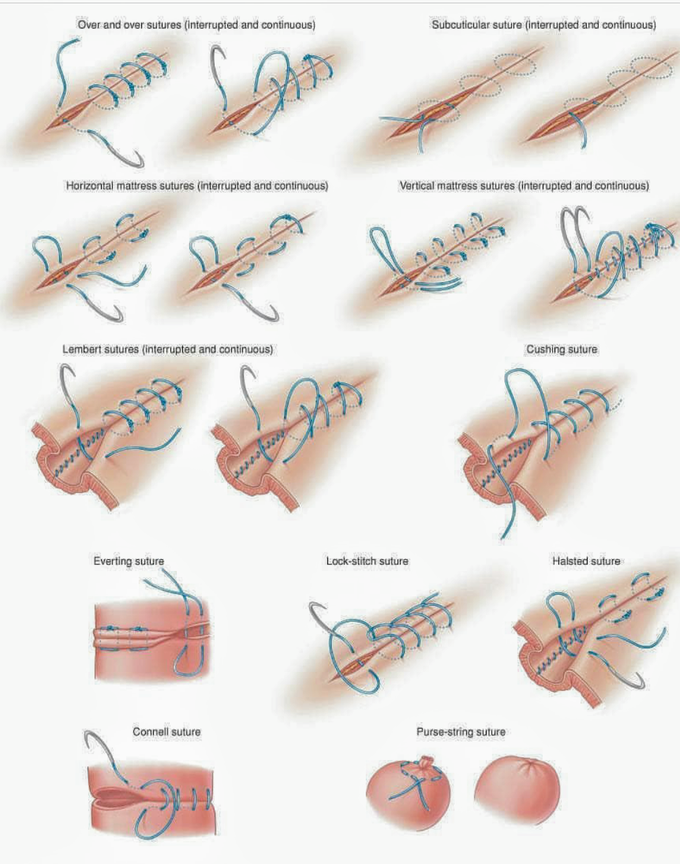


Different types of Surgical suturing techniques.
As we all know when a Doctor performs operation how many small small things he or she needs to alert about... So here are one of them.! - Many varieties of suture materials and needles are available. The choice of sutures and needles are determined, by the location of lesion, the thickness of the skin on that location and the amount of tension exerted on the wound. Regardless of the specific suture and needle choosen, the basic technique of needle holding, and needle driving, and knot placement remain the same. • Different types of surgical sutures - Simple interrupted suture. The most commonly used and most versatile suture in cutaneous surgery is Simple interrupted suture. •Simple running suture(continuous) It is essentially an uninterrupted series of Simple interrupted suture. •Running locked suture It may be either locked or left unlocked. • Vertical mattress suture It is a variation of Simple interrupted suture. •Half-burried vertical mattress suture It is a modification of vertical mattress suture that eliminates two of the four entry points, thereby reduce scarring. •Pulley suture It is a modification of vertical mattress suture. •Far-near near- far modified vertical mattress suture; Another stitch that serves the save function as a pulley suture is a Far-near near-far modified vertical mattress suture. •Horizontal mattress suture It is placed by entering the skin 5mm to 1cm from the wound edge. •Dermal-subdermal sutures It is placed by inserting the needle parallel to the epidermis at the junction of the dermis and the subcutis. •Buried- horizontal mattress suture It is a purse-string suture.
Thank you sooooooooo much.... I was too lazy to search this online and i desperately wanted to read.....

